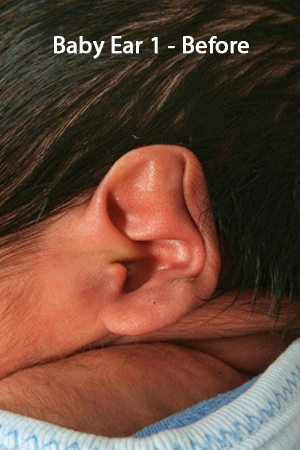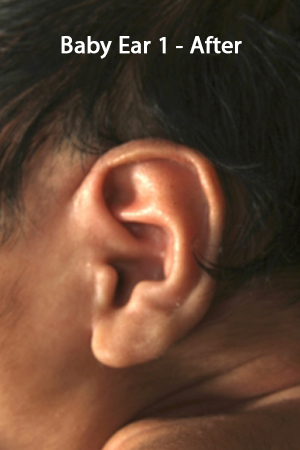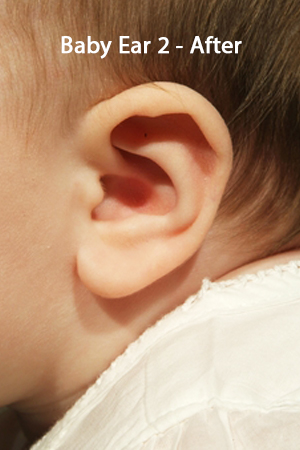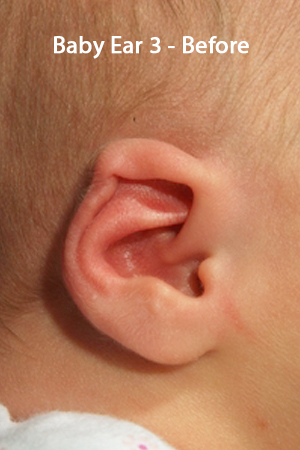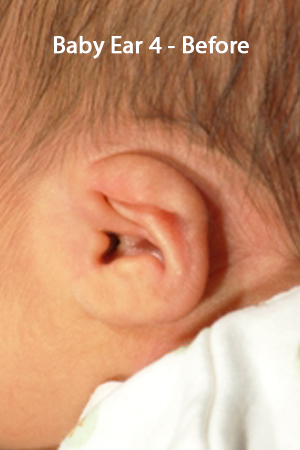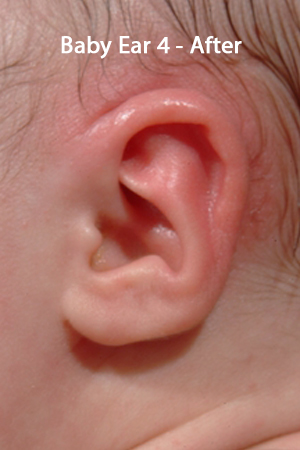
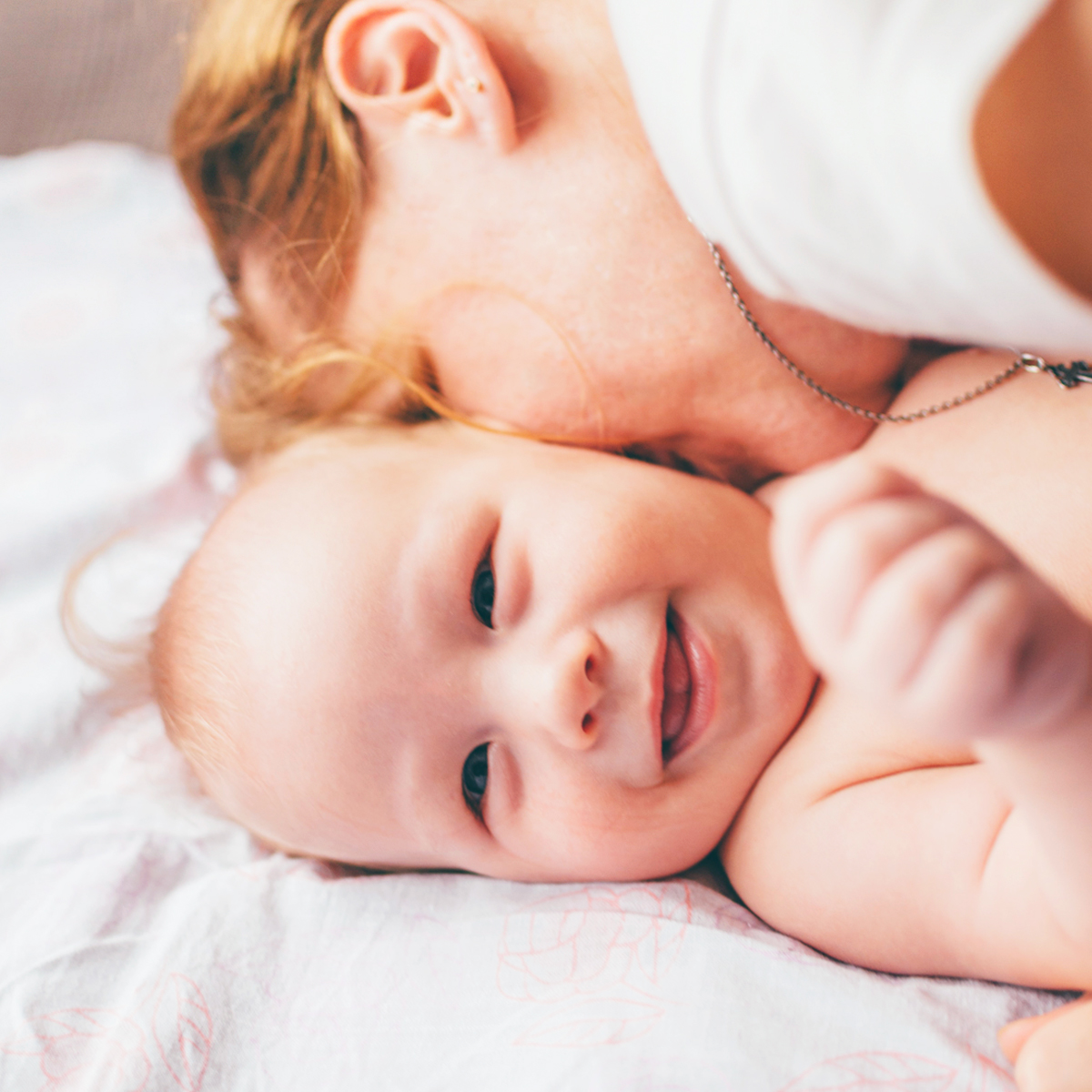
An estimated one-third of infants have congenital ear deformities, and only 30% of them will self-correct themselves over time. There are various types of ear deformities, and the cause of the deformities are usually unknown. However, with early intervention, ear deformations resulting from misshapen cartilage with no deficiency of skin and cartilage, can be corrected non-surgically.
In many cases of childhood ear deformity, many recommend that corrective ear surgery (otoplasty) should be performed after the ears have reached their mature size, which is typically after the age of 5. Children who grow up with ear deformities often exhibit signs of low self-esteem, anxiety, elevated social isolation and emotional withdrawal.
With the EarWell® Infant Ear Correction System, you can correct your child’s ear deformities with a consistent and high success rate with no incisions or pain. The EarWell® Infant Ear Correction System is the first and most advanced non-surgical infant ear deformity correction device developed by Becon Medical and is used globally to help children born with ear deformities.
Types of Ear Deformations
The EarWell® Infant Ear Correction System is able to correct congenital ear deformations that are classified as misshapen ears with no deficiency of skin or cartilages. The types of ear deformities that EarWell® is able to treat include:
Stahl’s Ear
Stahl’s ear is characterised by malformation of the upper portions of the outer ear and a flattened ear rim due to misshapen cartilage which creates a pointed appearance at the top of the ear.
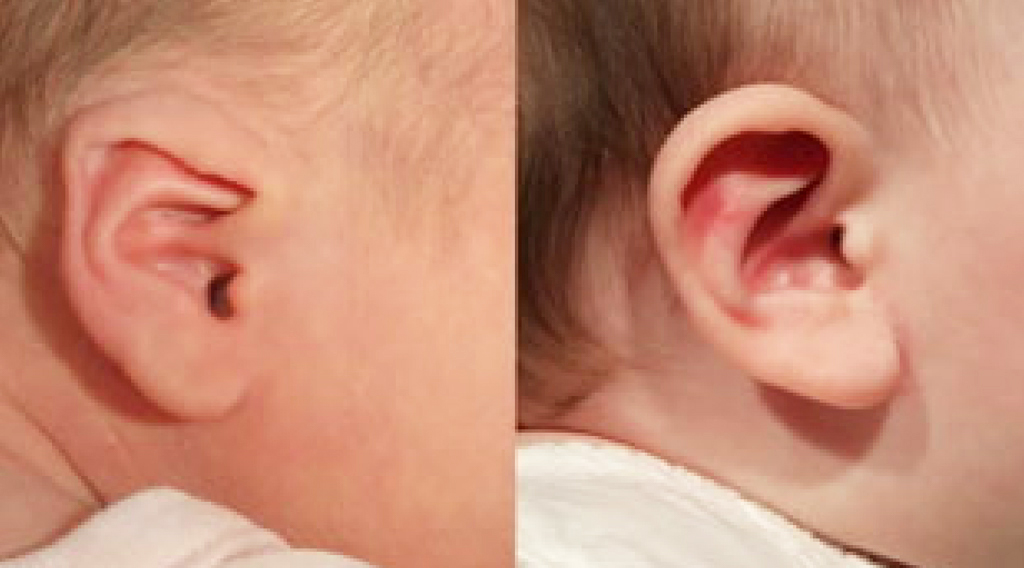
Prominent Ear
One of the most common types of infant ear deformities, affecting about 5% of the population worldwide. The ears are considered to be protruding if they extend more than 2 cm from the side of the head. Protruding ears typically present bilaterally and occur when the Antihelical fold (part of the Y-shaped cartilage near the centre of the outer ear) does not form properly or is underdeveloped which causes the outer rim of the ear (helix) to stick out.
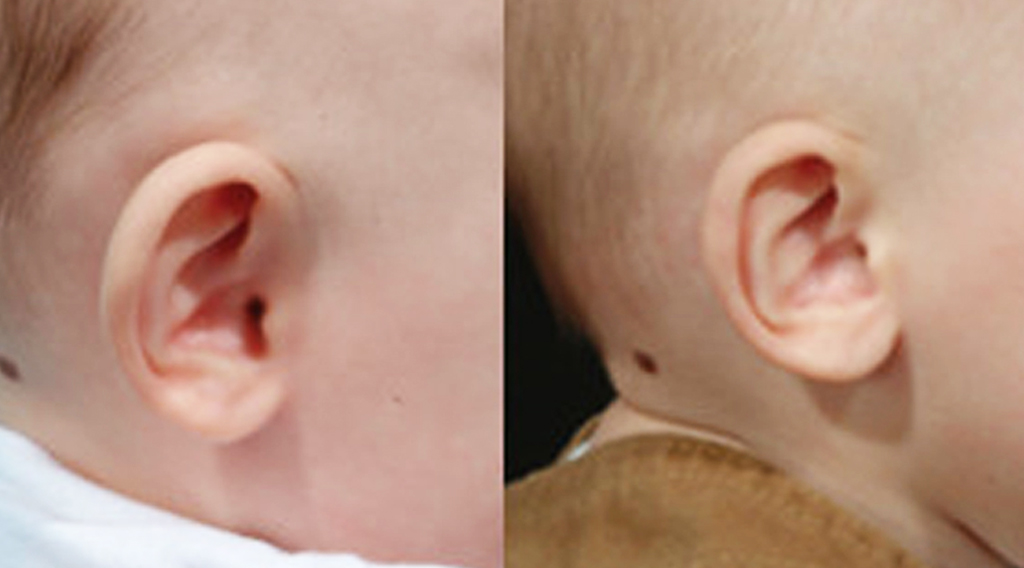
Helical Rim
Helical rim ear deformity in newborn infants occurs with helical rim irregularities or compression that may occur anywhere along its entire circumference.
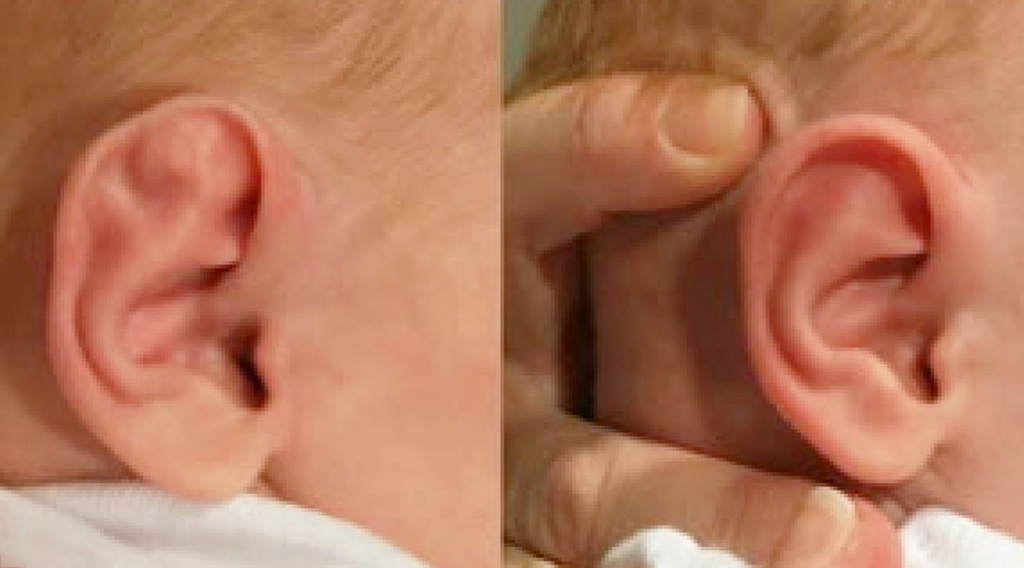
Cryptotia
Cryptotia is a congenital infant ear deformity characterised by an auricular muscle abnormality that causes the upper portion of the external ear cartilage to be partially buried underneath the skin on the side of the head.
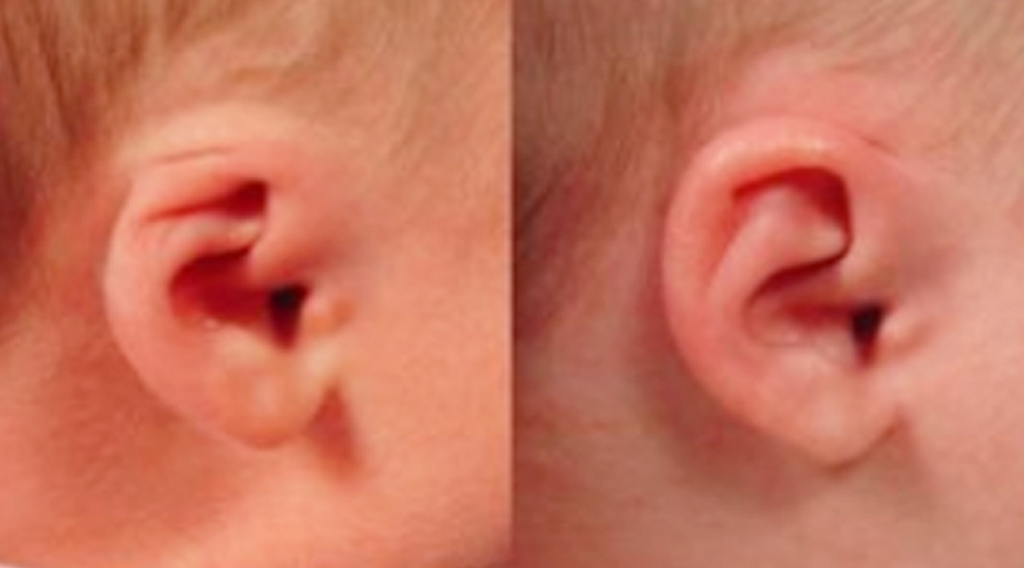
Lidding
Ear lidding deformity is an infant ear deformity that is present at birth and is characterised by a folding over of the upper portion of the ear similar in appearance to the lop ear deformity.
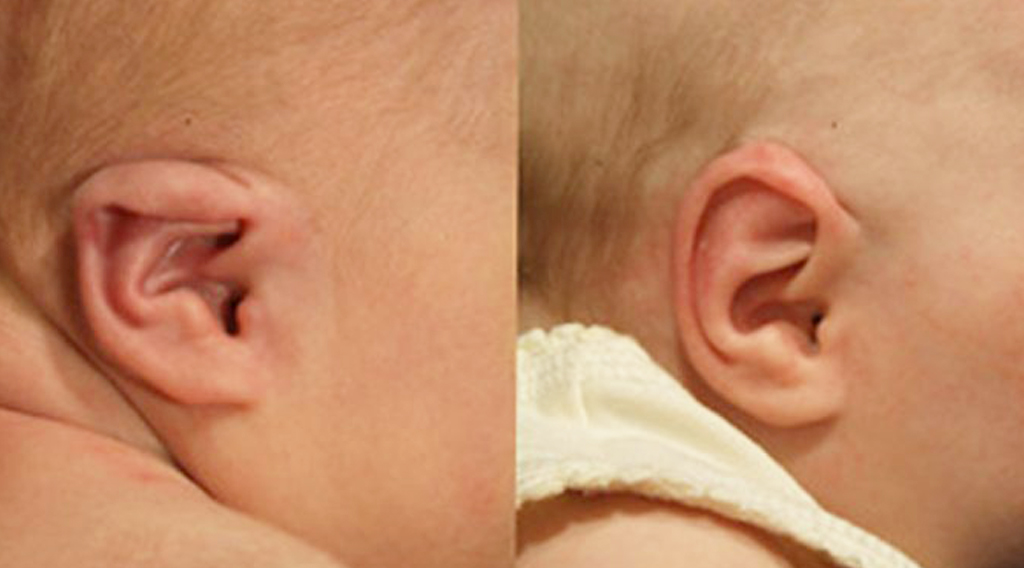
Cup Ear
Cup ear is characterised by a type of constriction of the upper third portion of the ear, resulting in the helix appearing wrinkled, rolled, or folded.
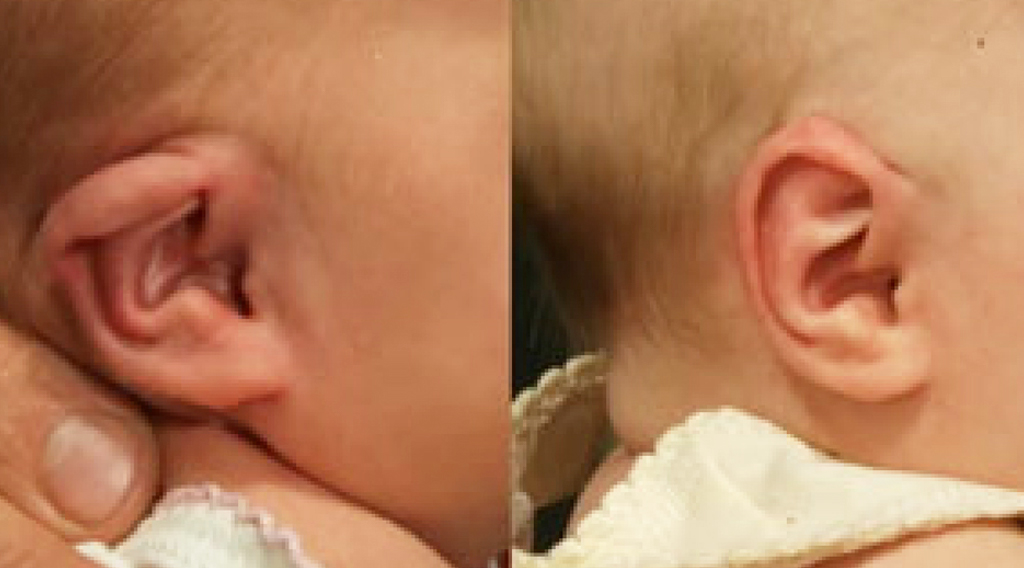
Conchal Crus
Conchal Crus ear deformity is a congenital (present of birth) ear malformation which is characterised by an abnormal fold of cartilage that crosses through the centre of the conchal bowl (the hollow middle portion of the outer ear).
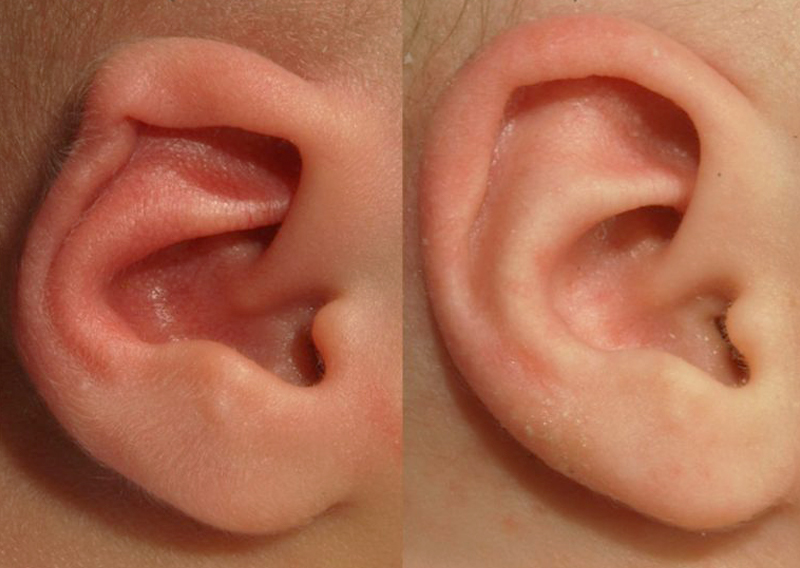
Consult us now for your EarWell® physician or qualified health providers for a diagnosis of your baby’s condition, and for any questions that you may have regarding the procedure.
BENEFITS
The EarWell® procedure is non-surgical and non-invasive and is entirely painless for your child. It can be started within days after your child’s birth and be applied within minutes in your doctor’s office. No anaesthesia, sedation, or medication is needed throughout the process. The device is worn for 4 to 6 weeks, in which afterwards your child’s ears will be normally shaped. Afterwards, the device can simply be removed, with no recovery time needed.
The optimum results are achieved when the child is less than a month old, and the earlier the application, the better the outcome and shorter the therapy. The results are seen within weeks or 2 months, and you get a permanent correction for infant ear deformities without the high cost of ear reconstruction surgery (otoplasty) later in your child’s life.
The EarWell® Infant Ear Correction System is the first and most advanced non-surgical infant ear deformity moulding device co-invented by Dr. Steve Byrd and developed by Becon Medical Premium Devices.
The devices are made from soft, malleable rubber, and is delicate enough to reduce the risk of pressure ulcers while being non-irritating to the babies’ skin. With early intervention at ages of one month and less, you can achieve higher success rates. This is because an infant’s ears are normally soft and easily pliable due to high levels of oestrogen from the mother still in the infant’s body.

